A bird in space: New York’s Nahmad Contemporary presents a selection of Joan Miró’s late works
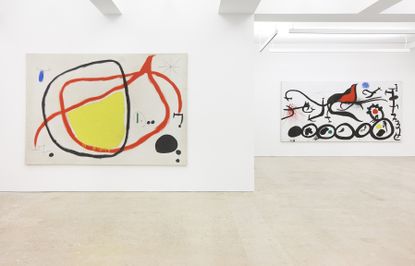
When Joan Miró visited the United States in 1947, it was an inaugural trip to a country in which he was already a star. Miró’s early works – created from the 1920s to the 1940s – had offered the American avant-garde a welcome alternative to the sterility of geometric abstraction; an altogether more emotional message that seemed more fitting in the wake of the Second World War. Having enjoyed a retrospective at the Museum of Modern Art in New York in 1941, his style is said to have inspired stars such as Rothko, Pollock, Gorky and de Kooning, to name just a few.
>What the Catalan artist didn't anticipate was that an exposure to the work of the young abstract expressionists he had galvanised would set into motion a valuable creative exchange. Their vitality, boldness and daring awakened a new artistic energy in Miró and was ultimately a catalyst to the liberation of his later works. Of his visits to America, Miró said: 'It showed me the liberties we can take, and how far we could go, beyond the limits. In a sense, it freed me.'
It is the artist's more open, dramatic later works – created during this 20-year period of 'liberation' – that are the focus of this new solo show at New York's Nahmad Contemporary. Comparing Miró's newfound freedom to that of a bird in space, the aptly titled 'Oiseaux dans L’Espace' celebrates the gestating forms, flourishes, drips and splashes that would characterise the work he created in the final two decades of his life.

Focusing on the work he created in the final two decades of his life, the show illustrates how the artist's first trip to America in 1947 influenced the rest of his career
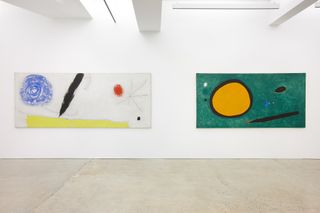
Miró's early works from the 1920s, 30s and 40s are said to have inspired stars such as Rothko, Pollock, Gorky and de Kooning, to name just a few. Pictured left: Oiseau éveillé par le cri de l'azur s'envolant sur la plaine qui respire ('Bird woken by the cry of the azure flying away across the breathing plain'), 1968. Pictured right: Le Vol de l'oiseau par le clair de lune ('The flight of the bird by moonlight'), 1967

In turn, during his trips to America, Miró's exposure to the work of the young American painters that he had helped to inspire awakened a new artistic energy within him and was ultimately the catalyst to the liberation of his late works. Pictured left: La Marche pénible guidée par l'oiseau flamboyant. Pictured right: Personnage aux 3 cheveux, oiseaux, constellations ('Figure with 3 strands of hair, birds, constellations'), 1976

Miró has said of his visits to America: 'It showed me the liberties we can take, and how far we could go, beyond the limits. In a sense, it freed me.' Pictured: Oiseau dans la nuit, 1967
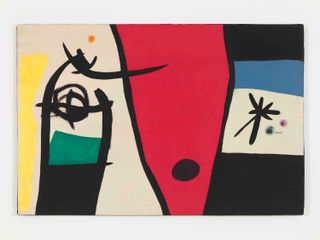
Aptly titled 'Oiseaux dans L’Espace', the new show at Nahmad Contemporary celebrates the gestating forms, flourishes, drips and splashes that characterised Miró's masterworks from the 1960s and 1970. Pictured: Femme à la voix de rossignol dans la nuit ('Woman with the voice of a nightingale in the night'), 1971
Address
Nahmad Contemporary
980 Madison Avenue
Third Floor
New York, NY 10075
Wallpaper* Newsletter
Receive our daily digest of inspiration, escapism and design stories from around the world direct to your inbox
-
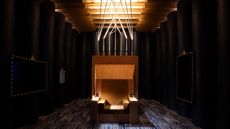 David Lynch presents 'A Thinking Room' at the Salone del Mobile
David Lynch presents 'A Thinking Room' at the Salone del MobileHere's a first look at the David Lynch Salone del Mobile 2024 installation, a cinematic experience within the fair curated by Antonio Monda
By Laura May Todd Published
-
 Riva El-Iseo is the legendary boat builder’s first fully-electric motor yacht
Riva El-Iseo is the legendary boat builder’s first fully-electric motor yachtThe Riva El-Iseo electric speedboat blends classic Italian lines with a silent, powerful and zero-emission powertrain
By Jonathan Bell Published
-
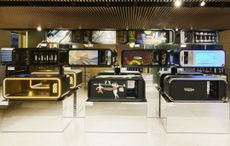 Technogym Home Bench 40 ways: designers interpret the home exercise classic
Technogym Home Bench 40 ways: designers interpret the home exercise classicTechnogym marks its 40 anniversary with 40 special editions of its Home Bench created in collaboration with international creatives
By Rosa Bertoli Published
-
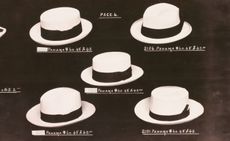 The Met’s ‘The Real Thing: Unpacking Product Photography’ dissects the avant-garde in early advertising
The Met’s ‘The Real Thing: Unpacking Product Photography’ dissects the avant-garde in early advertisingA new exhibition at The Metropolitan Museum of Art in New York explores the role of product photography and advertising in shaping the visual language of modernism
By Zoe Whitfield Published
-
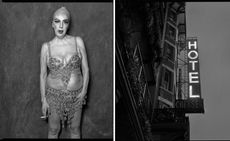 Tony Notarberardino’s Chelsea Hotel Portraits preserve a slice of bygone New York life
Tony Notarberardino’s Chelsea Hotel Portraits preserve a slice of bygone New York life‘Tony Notarberardino: Chelsea Hotel Portraits, 1994-2010’, on show at New York’s ACA Galleries, is the photographer’s ode to the storied hotel he calls home and its eclectic clientele
By Hannah Silver Published
-
 ‘LA Gun Club’: artist Jane Hilton on who’s shooting who
‘LA Gun Club’: artist Jane Hilton on who’s shooting who‘LA Gun Club’, an exhibition by Jane Hilton at New York’s Palo Gallery, explores American gun culture through a study of targets and shooters
By Hannah Silver Published
-
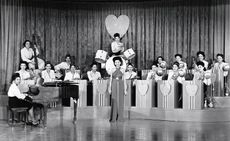 Detroit Institute of Arts celebrates Black cinema
Detroit Institute of Arts celebrates Black cinema‘Regeneration: Black Cinema 1898-1971’ at the Detroit Institute of Arts (DIA) brings lost or forgotten films, filmmakers and performers to a contemporary audience
By Anne Soward Published
-
 BLUM marks 30 years of Japanese contemporary art in America
BLUM marks 30 years of Japanese contemporary art in AmericaBLUM will take ‘Thirty Years: Written with a Splash of Blood’ to its New York space in September 2024, continuing its celebration of Japanese contemporary art in America
By Timothy Anscombe-Bell Published
-
 Todd Gray’s sculptural photography collages defy dimension, linearity and narrative
Todd Gray’s sculptural photography collages defy dimension, linearity and narrativeIn Todd Gray’s New York exhibition, he revisits his 40-year archive, fragmented into elaborated frames that open doors for new readings
By Osman Can Yerebakan Published
-
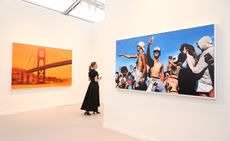 Frieze LA 2024 guide: the art, gossip and buzz
Frieze LA 2024 guide: the art, gossip and buzzOur Frieze LA 2024 guide includes everything you need to know and see in and around the fair
By Renée Reizman Published
-
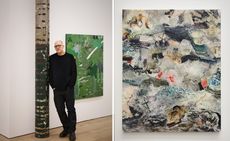 New York artist Christopher Astley showcases an alternative natural world
New York artist Christopher Astley showcases an alternative natural worldAt Martos Gallery in New York, Christopher Astley’s paintings evoke an alternative natural world and the chaos of warfare (until 16 March 2024)
By Tianna Williams Published